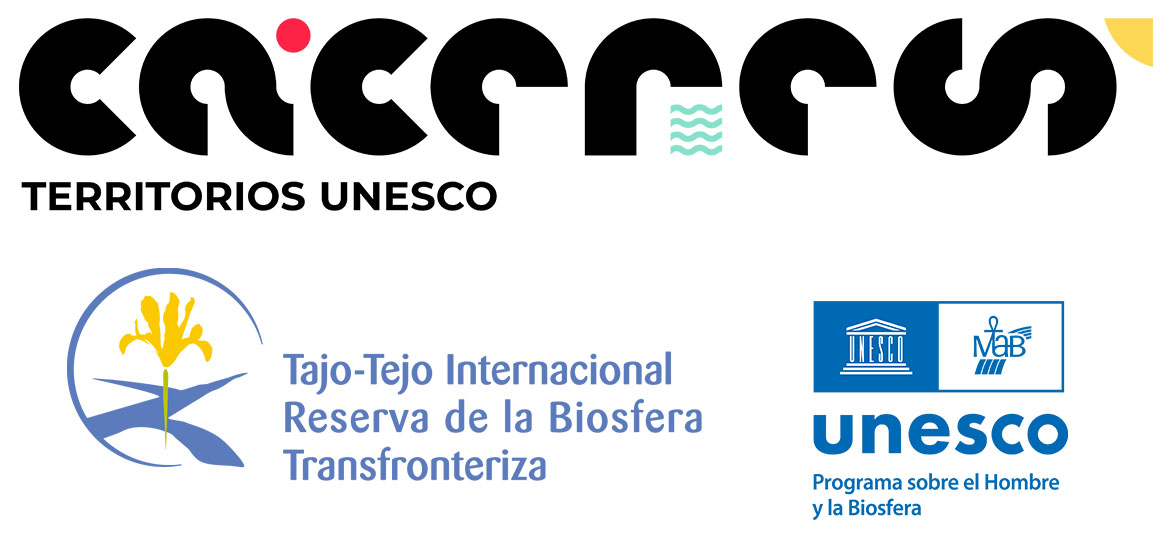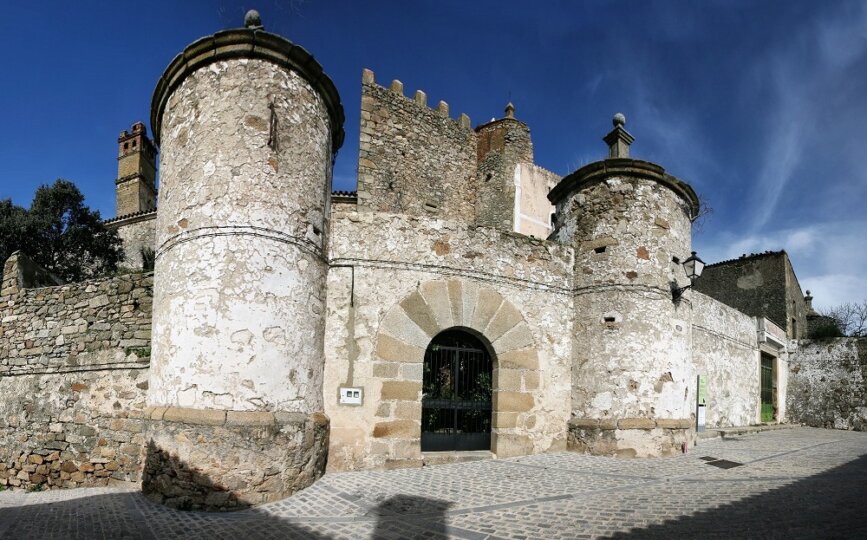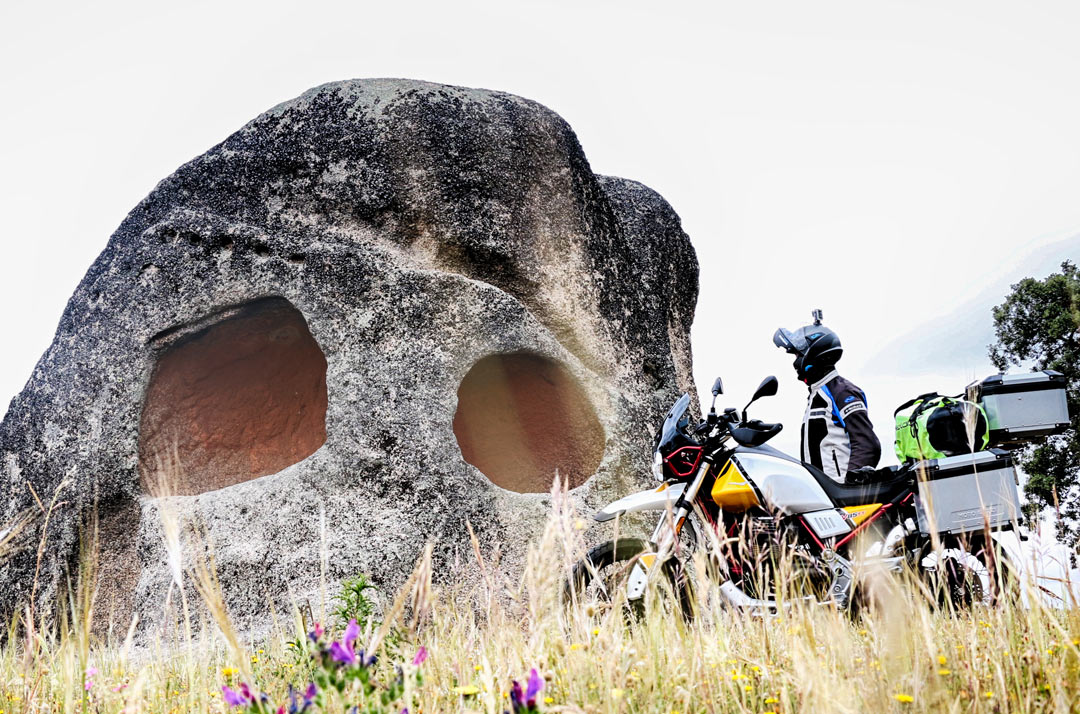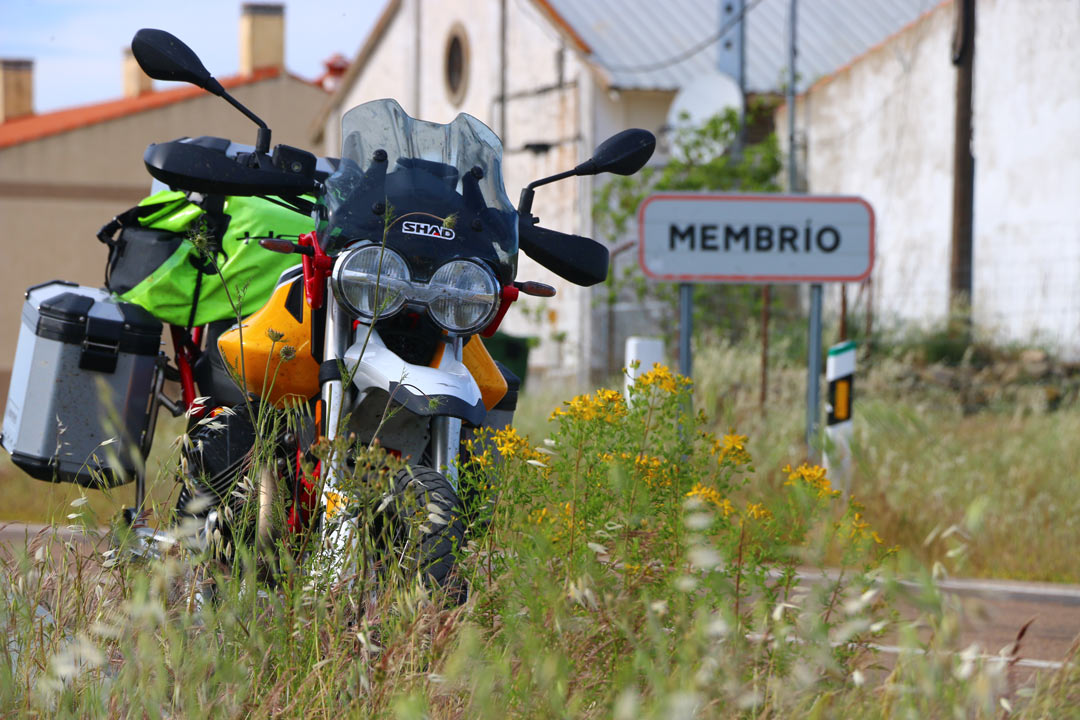Routes by motorbike
Tajo Internacional offers plenty of alternatives for motorbike touring, both owing to its spectacular environment surrounded by nature and full of historical remains but also to the quality of the roads of Extremadura which have perfect tarmac and blend into the terrain.
If what you want is a different place to go, charming locations reached on recondite roads, your perfect destination is Tajo Internacional. Here you will be able to enjoy both the imposing Alcántara Bridge and small villages or hidden spots in which balance has been maintained between nature and human beings for millennia.
In this way, beneath the flight of birds such as eagles or storks you will ride through dehesas, scrubland, and the banks of the great River Tajo. This is sheer heaven for lovers of slow riding. We propose a circular route so you can enjoy the Biosphere Reserve and Tajo Internacional Nature Reserve at their best.
Brozas
Tajo Internacional welcomes the motorbike traveller with this impressive monumental ensemble, a product of the command of the all-powerful Order of Alcántara between the 15th and 17th centuries. It is also noteworthy for its environment rich in steppe and aquatic birds such as ducks, cranes, great bustards, and storks in its pools and wetlands.
Villa del Rey
This is an example of rural Spain in the midst of the Trujillo-Cáceres dehesa. Here you can relax in peace as the storks clap their bills; a real pleasure which helps you to disconnect from the whirl of the big city.
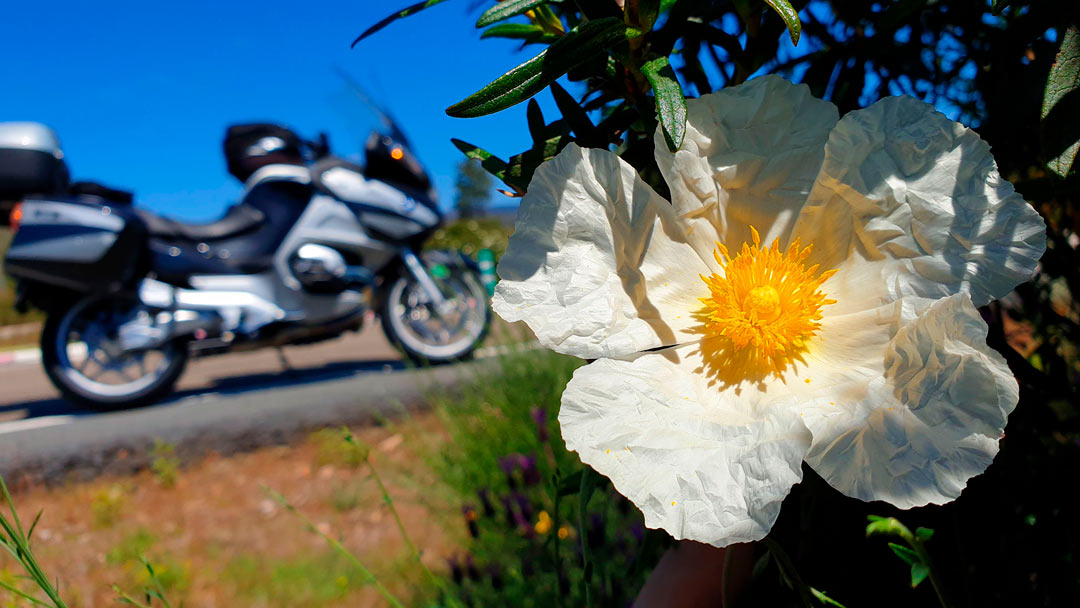
Alcántara
Six kilometres later the traveller comes to the jewel in the crown of Tajo Internacional. Its name comes from Arabic and means ‘The Bridge’; crossing its imposing Roman bridge on a motorbike is something you have to do at least once a lifetime. This enclave was the nerve centre of the Order of Alcántara and is now the nerve centre of the Tajo Internacional Nature Reserve. If you feel like knowing more you can find out everything at the Interpretation Centre of the Tajo Internacional Nature Reserve and Biosphere Reserve (Calle Cuatro Calles, 2) and at the Tourist Office (Avenida de Mérida, 21).
On top of all this you can enjoy the beach. Yes, we mean it, because a few kilometres away you can park your motorbike and take a dip at the Alcántara Quarry and end the day with incredible views from the viewpoint of the dam. Both places are accessible by motorbike.
The Quarry is also one of the best places to observe black storks, Egyptian and griffon vultures, or the blue rock thrush. This is why our visit must be especially respectful with the location above all during the spring, which is the breeding season of the main species of birds which nest on its crags.
Piedras Albas
On a short section with bends we come to this village which is only 7 kilometres from Portugal. Visit the rock known either as the ‘Peña Buraca’ or ‘El Canchal de los dos ojos’. Ask in the village for the ‘Casa del Cuartillo’ trail which is not surfaced but gives an easy ride. Once you cross the cattle grid turn right and among holm oaks and wine and olive presses, you will find tombs and remains of masonry of this monument from the late Roman Empire.
Zarza la Mayor
A good itinerary on a motorbike includes the Roman Bridge of Segura, a spectacular frontier enclave. Pass over the River Erjas to the north to enjoy a rugged landscape which divides the two countries. Then return to Spain on the CC-174 towards Zarza la Mayor. Here you can make a stop to observe Fuente de la Conceja, a fountain which is an example of 14th-century architecture and represents one of the main aquifers of the area. The Town Hall, which housed the Royal Silk Factory in the 18th century, the Church of San Andrés, and the Peñafiel Fortress are also worth visiting
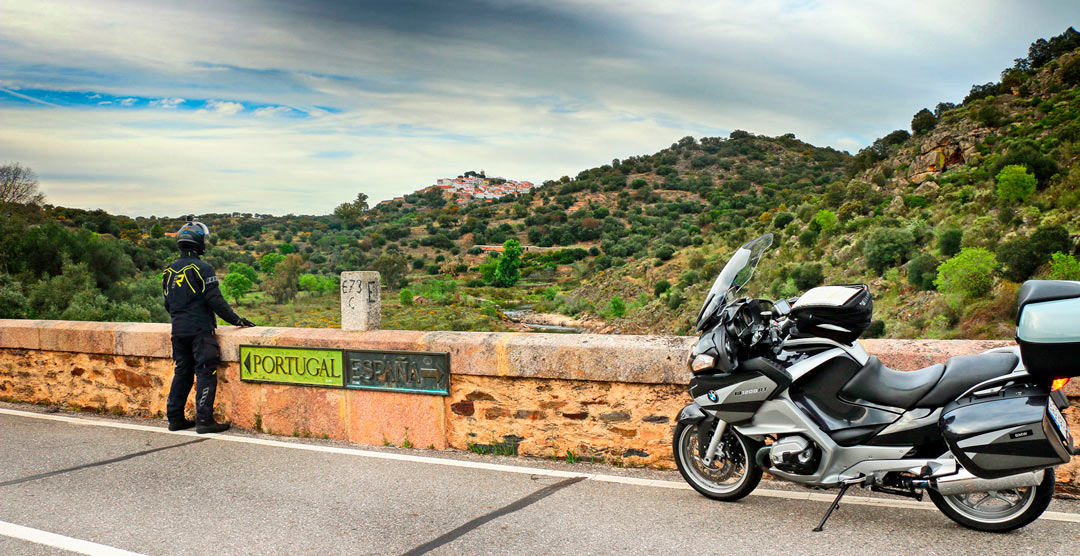
Portugal
On the Portuguese side of the Nature Reserve on a high promontory you should visit the microcosms of Monsanto and Penha Garcia with their houses embedded in the rock. Moreover, it is worth seeing the panoramic view from the castle. For their part, Idanha-a-Velha and Idanha-a-Nova are equally charming. Then you can pass by Castelo Branco and Marvão in the region of the Alentejo to return to Extremadura through the mountain pass of Puerto Roque.
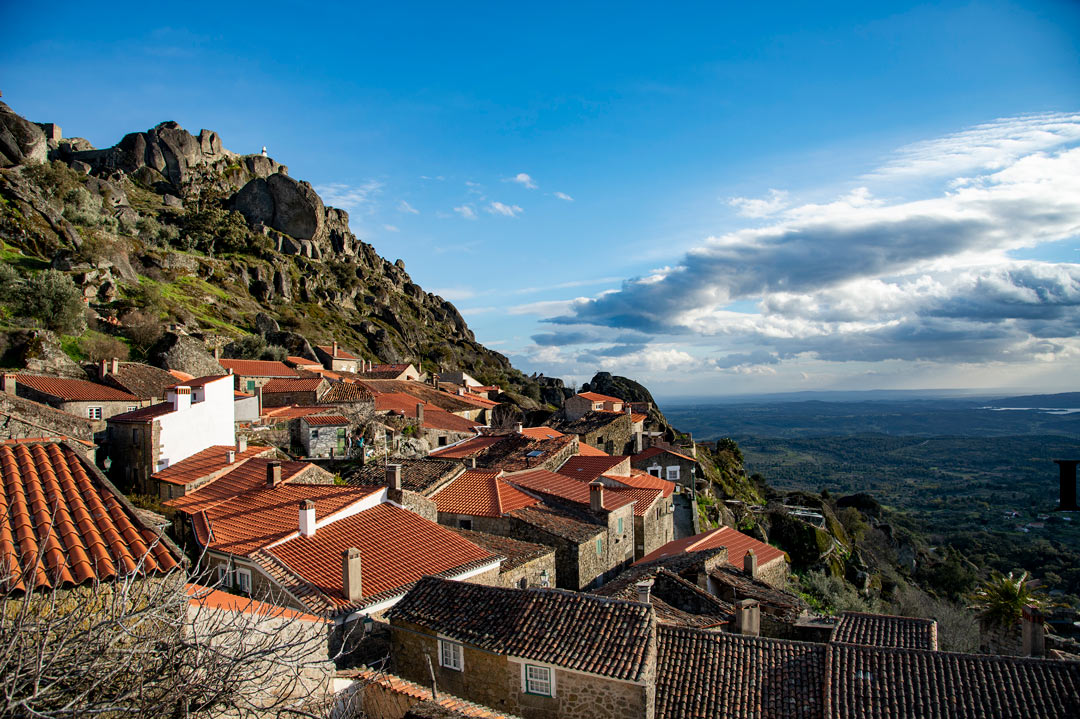
Valencia de Alcántara
Among quartzite rocky outcrops which are ideal for climbers and a leafy wood can be found another of the treasures of Tajo Internacional: Valencia de Alcántara. This town has been inhabited since the megalithic period and is noted for its impressive collection of half a hundred dolmens which you can reach on dirt tracks amidst a spectacular landscape. We suggest you use trial bikes to find their exact locations.
Valencia de Alcántara is the town with the highest number of inhabitants in the reserve and is perfect for enjoying motorbike tourism. Indeed there are several estates for off-road riding.
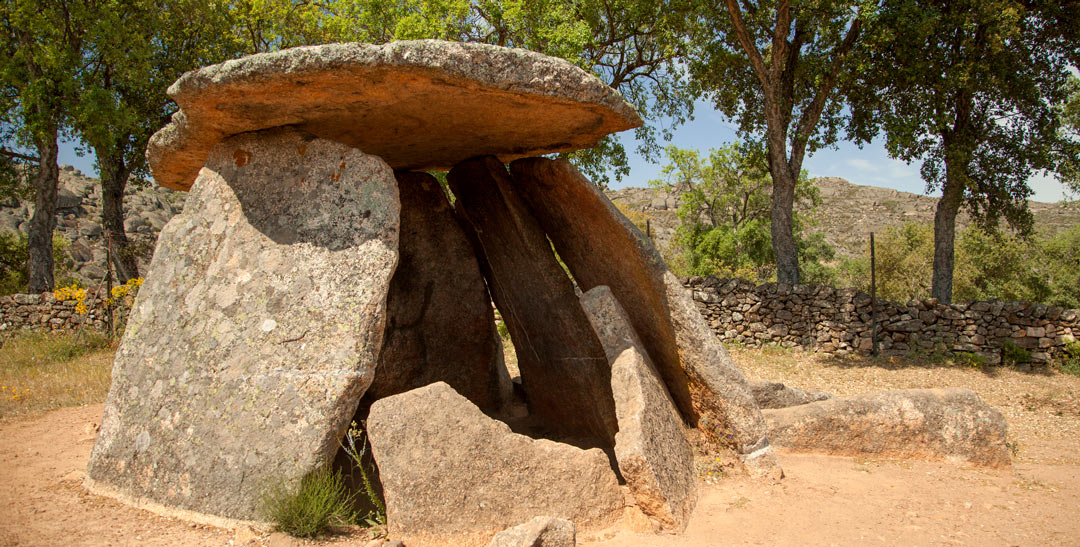
Cedillo
On the N-521 and then on the EX-374 you will reach Cedillo which is another example of the so-called ‘rural Spain’. On the way you will be accompanied by birds and deer and when you reach the mouth of the River Sever by aquatic animals. Here you have the chance to go on the famous Tajo Cruise.
Now it is important to plan your trip as you can cross over to Portugal via the hydroelectric power station of the Tajo, but you must find out the timetables before you go. From Cedillo to Montalvão you may have 14 kilometres to ride or 100 depending on the time you cross La Raya. In any case we recommend that you cross by Puerto Roque via Valencia de Alcántara.
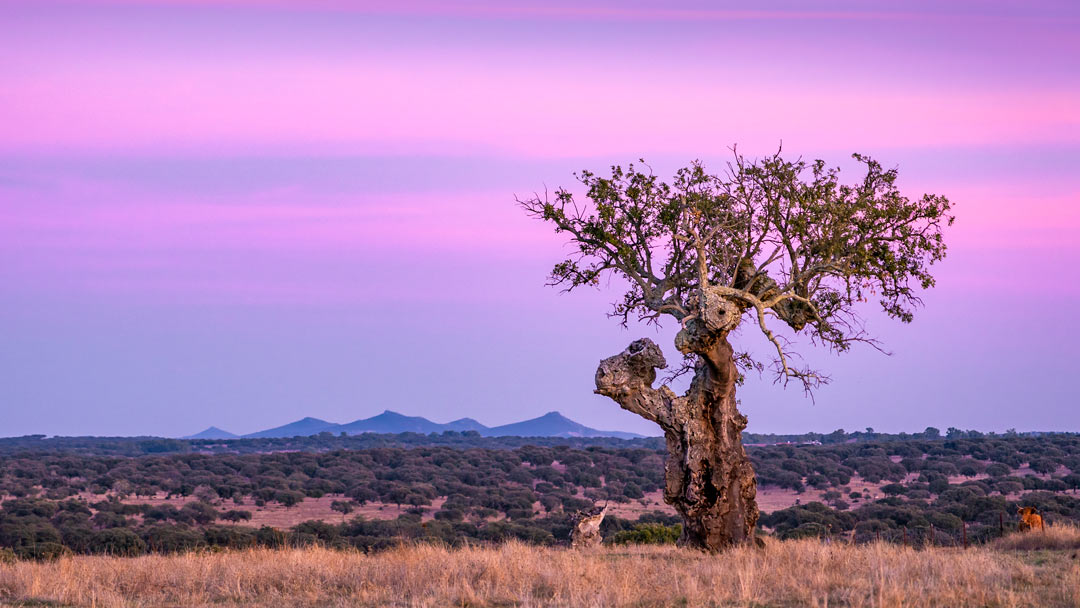
Herrera de Alcántara
From Cedillo towards the northeast you are riding through the most westerly part of Extremadura. It is a minor road and the tarmac is not in perfect condition, but the trip is worthwhile to visit Herrera de Alcántara. This village also has Roman, Arab, and Christian remains and belonged to the Order of Alcántara.
Carbajo
On the CC-37 you can reach Carbajo. Here there are upland areas and the terrain becomes steep. Game is abundant and you may well come across wild boar and deer.
We strongly recommend that you try the cheese of Carbajo, which has received international awards and has its factory in the village.
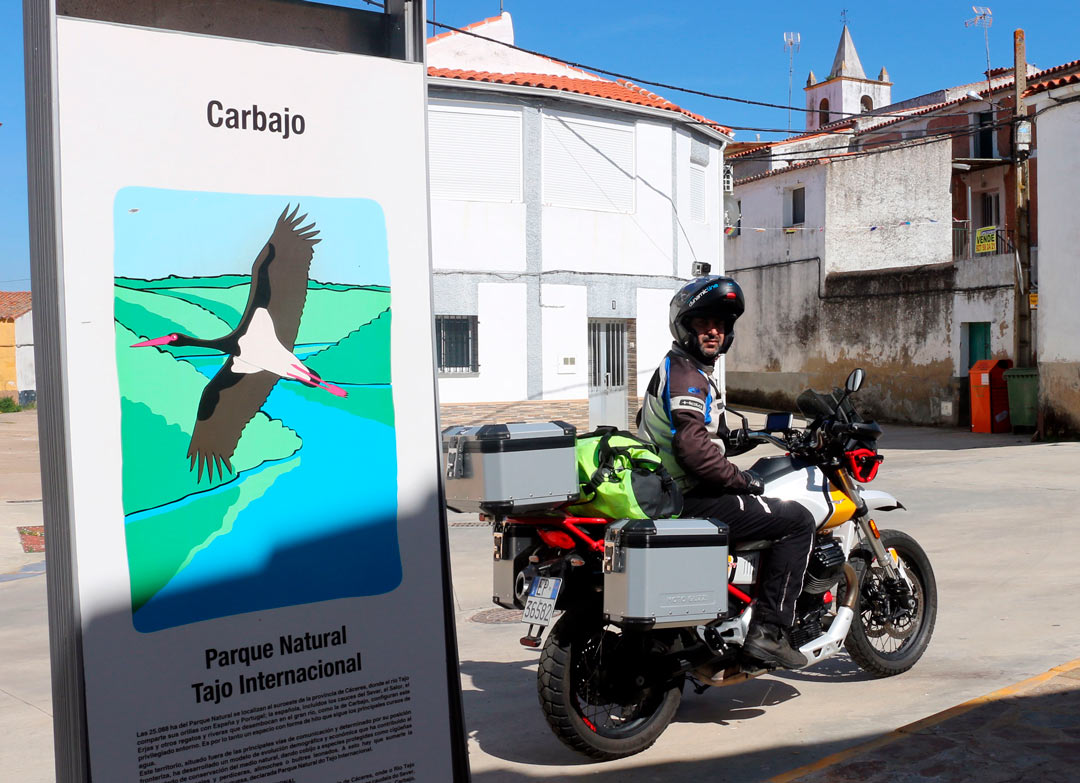
Membrío
On the bends of the CC-126 you are likely to come across red deer between Carbajo and Membrío. Moreover, you will find flocks of sheep and goats, horses, and herds of pigs and also come to the Church of Our Lady of Grace. We suggest that you continue as far as the pools and the reservoir of the cemetery to view the merging of the El Realito Stream with the Gata Royal Drovers’ Road, the mark of which we will also find in Piedras Albas and Zarza la Mayor. This crossroads has existed for millennia as is shown by the anthropomorphous tombs and the ruins of an ancient hill-fort.
Salorino
Riding along the N-521 road you come to Salorino. On the way you will pass calmly through one of the best examples of dehesa in the province of Cáceres with its typical Mediterranean vegetation and its wide diversity of fauna, a true natural paradise with an economic development which has been based on sustainability since Roman times and in this case features the River Salor.
Herreruela
Our circular route ends in Herreruela in a landscape dominated by Our Lady of La Encarnación and the now abandoned railway station. We suggest you observe the stars at this point as there is hardly any light pollution and the nights are an impressive spectacle. If you go in autumn you will hear the bellows of the rut as you ride.
Very near Herreruela on the EX-302 you descend to the River Salor to find wild nature and an old bridge. There is no doubt that this is one of the places where the air is the cleanest. This is paradise on earth!

